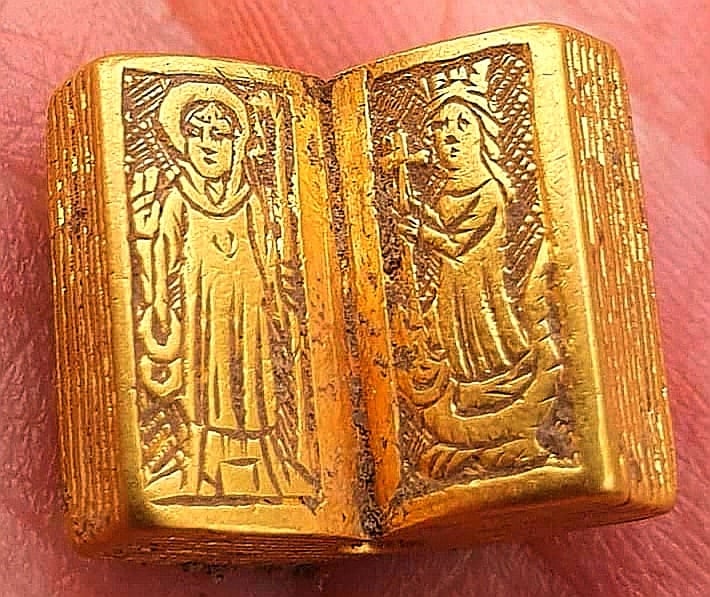Archaeology & History
A Metal Detectorist Discovered a Tiny Gold Book From the 15th Century That Might Have Belonged to King Richard III’s Wife
The book is worth an estimated $130,000.

The book is worth an estimated $130,000.

Amah-Rose Abrams

An English nurse named Buffy Bailey made a stunning discovery of a tiny, solid gold book while on holiday near York. Bailey and her husband, Ian, were walking near farmland when their metal detector alerted them to something under the ground. They began to dig, expecting to find the usual detritus.
Instead, the miniature gold book is thought to be connected to King Richard III, and could be worth an estimated £100,000 ($134,500)
“I dug down five inches and it was just there—I still didn’t believe it was anything special,” she told the BBC. Perhaps it was a souvenir trinket dropped by a tourist, she thought.
Once the nurse, who chose York for her metal detecting holiday because of its rich history, cleaned the tiny book, she realized how lustrous and heavy the object was.
The book, possibly a bible or a book of hours, is engraved with Saints Leonard and Margret, patron saints of childbirth, which has led experts to the conclusion that it may have been a gift to someone during pregnancy.
Only nobles were allowed to carry gold during the 15th century, so the owner of this .2 ounce, 22- or 24-karat gold trinket is thought to be a relative of Richard III as it was found close to land he owned between 1483 and 1485. This has led to speculation that it could have belonged to his wife Anne Neville.
Experts are thrilled at the news of the discovery due to its value and uniqueness. Some are saying that the book might have the same maker as the Middleham Jewel, a sapphire and gold pendant, also with engravings linked to childbirth, that was also found by a metal detectorist. The jewel is also thought to have belonged to royalty or nobility and was discovered near Middleham Castle, the childhood home of Richard III near York.
The Yorkshire Museum bought it for £2.6 million ($3.5 million) in 1992. It is thought the museum may decide to purchase the book as well.